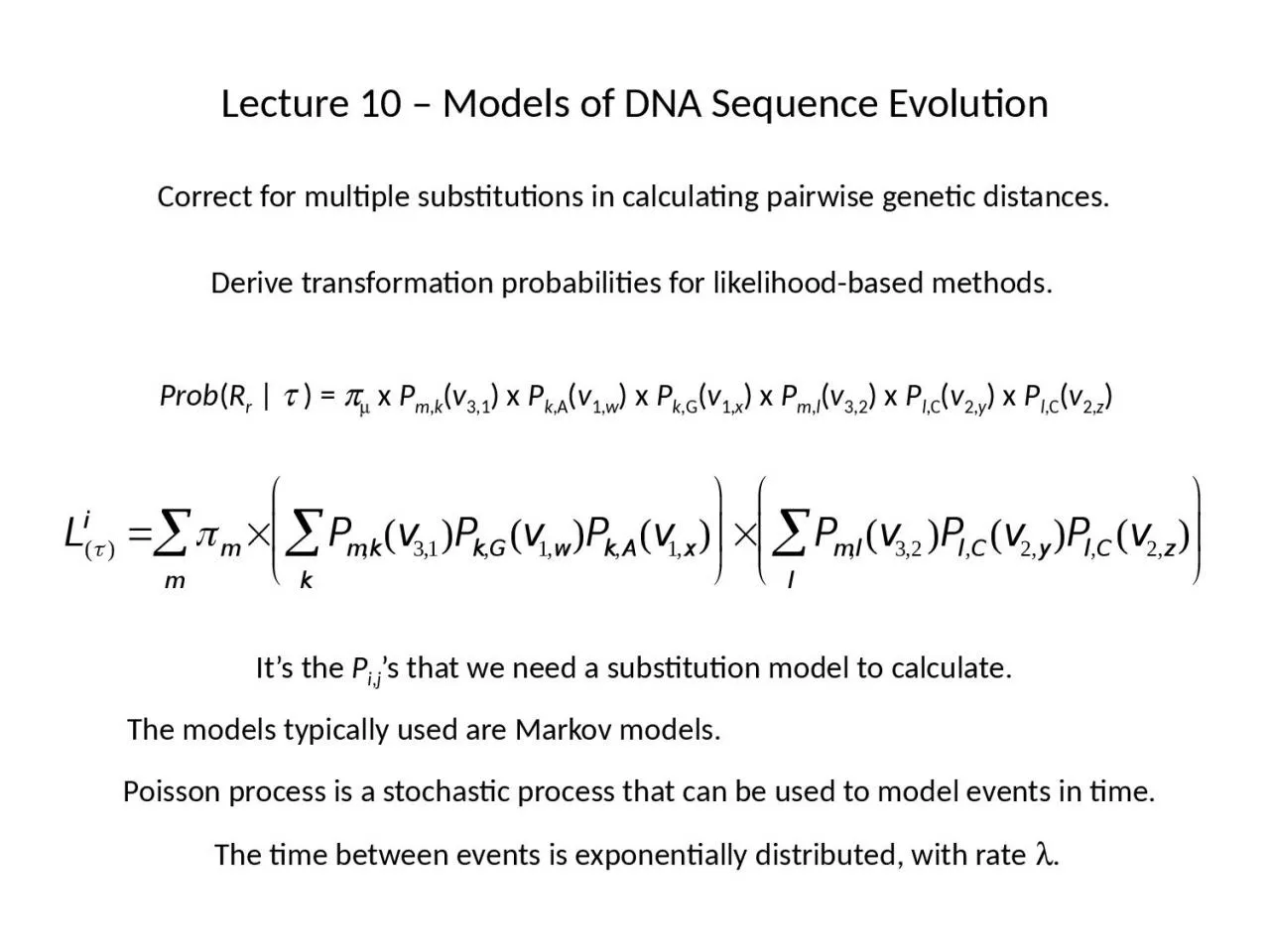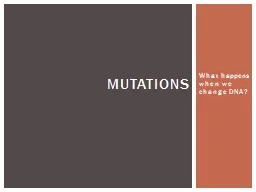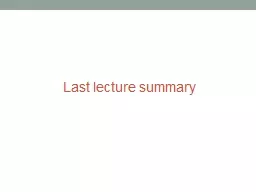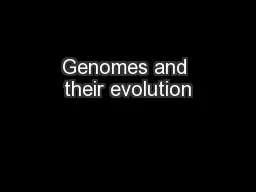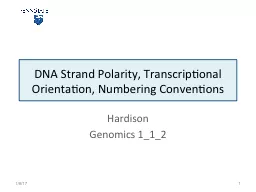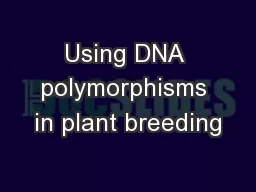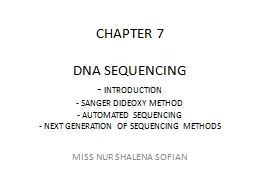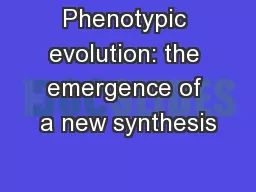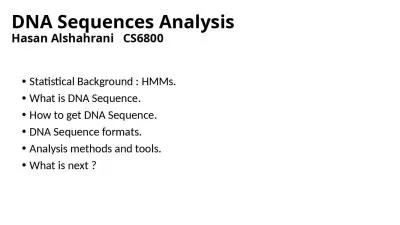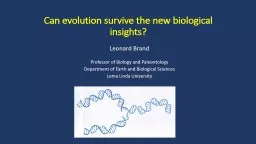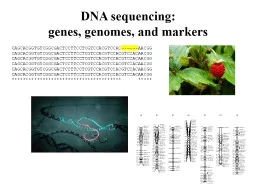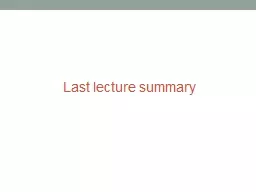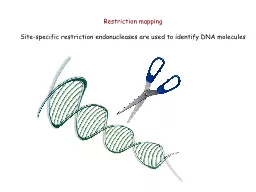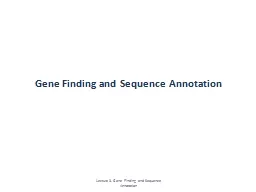PPT-Lecture 10 – Models of DNA Sequence Evolution
Author : jordyn | Published Date : 2023-10-28
Correct for multiple substitutions in calculating pairwise genetic distances Derive transformation probabilities for likelihoodbased methods Prob R r t p
Presentation Embed Code
Download Presentation
Download Presentation The PPT/PDF document "Lecture 10 – Models of DNA Sequence Ev..." is the property of its rightful owner. Permission is granted to download and print the materials on this website for personal, non-commercial use only, and to display it on your personal computer provided you do not modify the materials and that you retain all copyright notices contained in the materials. By downloading content from our website, you accept the terms of this agreement.
Lecture 10 – Models of DNA Sequence Evolution: Transcript
Correct for multiple substitutions in calculating pairwise genetic distances Derive transformation probabilities for likelihoodbased methods Prob R r t p m x P mk v. Textco BioSoftware (formerly Textco, Inc.), has been developing high quality productivity tools for molecular biologists for over 25 years. Our unwavering commitment to customer service, and our focus on quality has generated a loyal customer following. Since 1984, we have provided solutions to scientists who are breaking new ground in genetic engineering, basic biology research, drug development, and biotechnology - at academic, government, and corporate institutions in more than 50 countries worldwide. Mutations. What do you think a mutation is?. What happens to you during a mutation?. Mutations. Mutations. are ANY change in an organism’s DNA.. Mutations usually happen during if a mistake is made during replication (S phase).. Sequencing strategies. Hierarchical genome shotgun HGS – Human Genome Project. “map first, sequence second. ”. clone-by-clone … cloning is performed twice (BAC, plasmid). Sequencing strategies. Chapter 21. You must know. How prokaryotic genomes compare to eukaryotic genomes.. Applications of bioinformatics to medicine, evolution, and health.. The activity and role of transposable elements and retrotransposons in generating genetic diversity.. Hardison. Genomics . 1_1_2. 1. 1/8/17. Different polarity for the two strands of DNA. 1/8/17. 2. AGCCTCGCAT. TCGGAGCGTA. 5’. 5’. The sequence of each strand is the reverse complement of the other.. How many genes determine important traits?. Where these genes are located?. How do the genes interact? . What is the role of the environment in the phenotype?. Molecular breeding: Gene discovery, characterization, and selection using molecular tools. - . INTRODUCTION. - SANGER DIDEOXY METHOD. - AUTOMATED SEQUENCING. - NEXT. GENERATION OF SEQUENCING METHODS. MISS NUR SHALENA SOFIAN. INTRODUCTION. 1977:. . Frederick Sanger along with Allan . Maxam. Stevan. J. Arnold. Oregon State University. Outline. Synthesis in evolutionary biology then and now. Simpson (1944) & the ongoing synthesis in evolutionary quantitative genetics. Two examples of the ongoing synthesis (Estes & Arnold 2007, . Alshahrani. CS6800. Statistical Background : HMMs.. What is DNA Sequence. . How to get DNA Sequence.. DNA Sequence formats.. Analysis methods and tools.. What is next ?. HMMs. Hidden Markov Model (. Leonard Brand. Professor of Biology and Paleontology. Department of Earth and Biological Sciences. Loma Linda University. Goal of this talk:. Evaluate the current state of the evidence for the evolution of life forms by random mutation and natural selection. Knowing how many genes determine a phenotype (Mendelian and/or QTL analysis), and where the genes are located (linkage mapping) is a first step in understanding the genetic basis of a phenotype . A . DNA polymerase (copy DNA), restriction endonucleases (cut DNA), ligases (join DNA). DNA cloning – vector (plasmid, BAC), PCR. genome mapping. relative locations of genes are established by following inheritance patterns. What are restriction endonucleases (REs)?. How can REs be used to identify DNA molecules?. How can I find RE recognition sites in the . MET. plasmids? . Restriction endonucleases are part of a bacterium’s defense against invaders. Lecture 3. Gene Finding and Sequence Annotation. Objectives of this lecture. Introduce you to basic concepts and approaches of gene finding. Show you differences between gene prediction for prokaryotic and eukaryotic genomes.
Download Document
Here is the link to download the presentation.
"Lecture 10 – Models of DNA Sequence Evolution"The content belongs to its owner. You may download and print it for personal use, without modification, and keep all copyright notices. By downloading, you agree to these terms.
Related Documents

